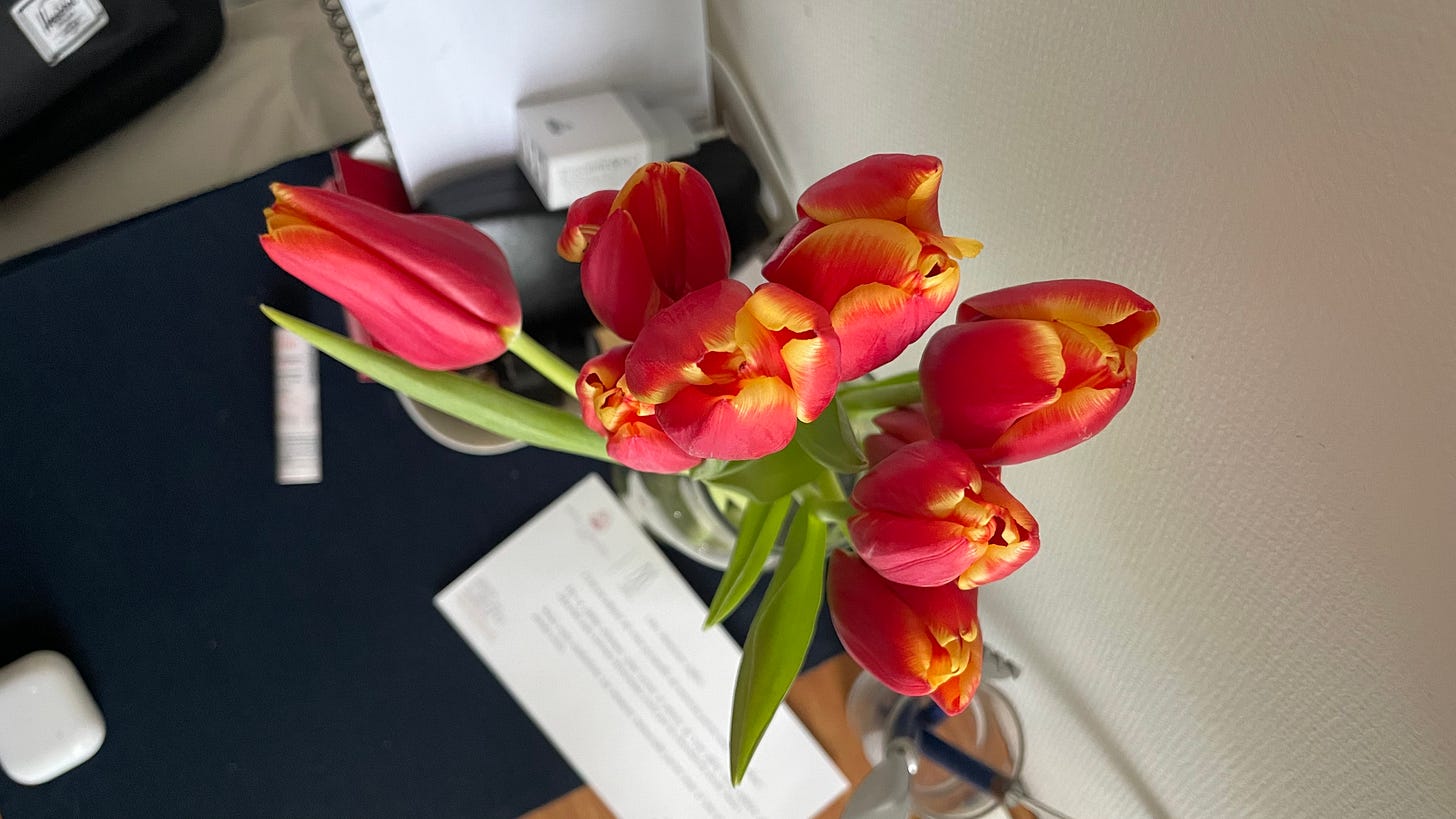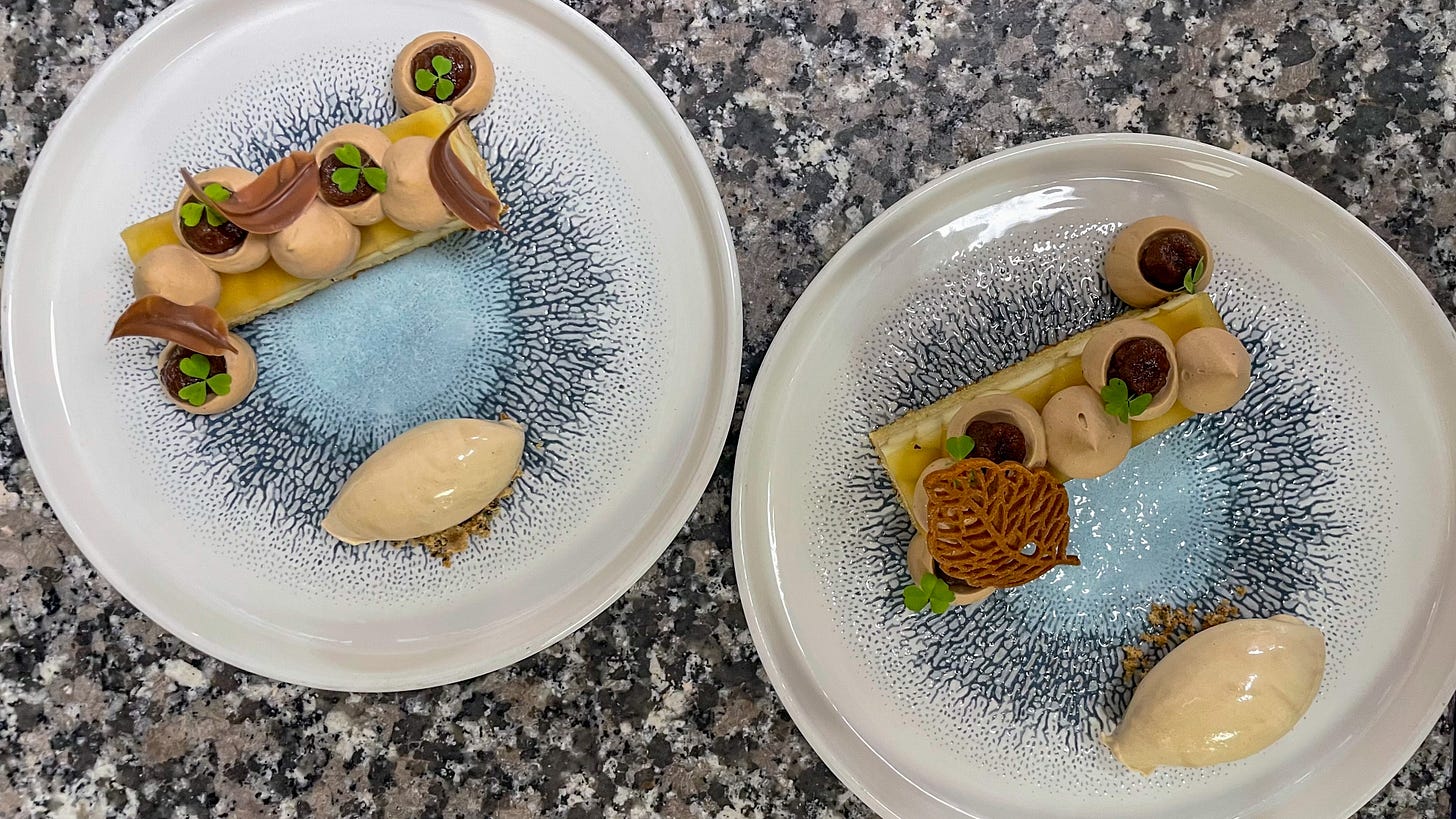When I moved to France, I started seeing the spring equinox as the true new year. It wasn’t something I had consciously thought about before, but being here, it just made sense. Winter in France doesn’t feel like a real winter—there’s no deep freeze, no heavy snowdrifts, just darkness and rain. And then, suddenly, spring arrives, and with it, everything changes.
The equinox is when life starts happening again. You leave your home. You go outside. You’re not stuck inside anymore, waiting for the rain to pass, waiting for the sun to rise. Instead, the world feels open again, ready for movement, ready for life.
There’s something about the start of the calendar year in January that has always felt unnatural to me. It’s still cold, still dark, still rainy—or snowy, depending on where you are. There’s no real change in your body, no sense of renewal. It feels arbitrary, like something dictated by scientists rather than something we feel deep in our bones.
But spring—that’s different. Spring is when your body knows something is changing. The days get longer. The air gets lighter. The world starts waking up, and so do we.
As the equinox approaches, I don’t notice any massive, life-altering changes. It’s more like a series of small shifts, little signals that things are moving forward. I stay up later. I don’t linger in bed as long. I feel lighter, happier. There are flowers everywhere. The trees are green again. Birds are singing, and their sound makes everything feel more alive.
It’s not a sudden transformation, but rather a gradual awakening. And that’s what makes it feel right—like I’m syncing up with the world around me instead of forcing change just because the calendar says I should.
There are deep cultural and historical traditions tied to the equinox that resonate with me. In particular, I celebrate Navroz as a religious holiday, and that connection has only deepened over time. Teaching about Navroz in religious education classes made me realize how many people, across so many cultures, have viewed the equinox as the true beginning of the year. It’s not just something I made up—it’s something deeply rooted in history.
In my heart you are the mirthful ray
You are the caring, though my companions they
Happy is the world with the Nowruz and with the Eid
You are both my Eid and my Nowruz today
—Jalaluddin Rumi
And yet, it’s not even the religious aspect that makes it feel “correct” to me. It’s the simple fact that so many other people have recognized it, too. The equinox has long been seen as a time of renewal, rebirth, and fresh beginnings. That means something.
I don’t have any strict rituals around the equinox, but I do approach goal-setting in a way that aligns with the seasons.
In January, I set goals—not necessarily as New Year’s resolutions, but as preparations. The first few months of the year are like a quiet buildup, a time to lay the groundwork. Then, when the equinox arrives, I’m ready. This is when things truly start. This is when the momentum kicks in.
Winter, in a way, is the preparatory phase. Spring is when things actually happen.
There’s something freeing about aligning with the natural world in this way. I don’t feel the pressure to force change in the dead of winter, when all I really want to do is stay warm and wait for the light to return. Instead, I embrace the natural rhythm of things.
And when spring arrives, I step into it fully—light, airy, unburdened by the heaviness of winter. The sun is out. The world is in bloom. I can buy flowers from the store. I can go out and enjoy the day.
And I know, without a doubt, that the new year has truly begun.
Happy adventuring,
Ahmed
Things I’m Enjoying
Being an involved citizen - In 2009, the Supreme Court of Canada reaffirmed that expatriate Canadians living outside of Canada in a permanent manner can still exercise their democratic rights, specifically their right to representation. I have been taking full advantage of this ruling and consistently sending letters written to my MP (which my dad prints out and sends on my behalf) with all the turmoil going on. If you weren’t aware, Canada Post allows Canadians to send letters to the House of Commons and Senate without paid postage.
My fancy Original Crown Mill paper - I’ve run out of birthday cards so recently I’ve been sending our birthday notes on my expensive laid paper that I’ve been holding on to for ages for “something special.” But what’s more special than someone’s birthday? So far people have been enjoying them, though I only have a limited amount.
My new dessert coming to the menu next month - This new dessert, based on a London Fog, is just the perfect comfort dessert in the foggy Normandy coasts. It’s still not sunny here, a little cool, and very rainy. The dessert is a sort of bar or a finger. At the bottom a light and fluffy almond sponge, with a confit apple gelée, Earl Grey cream, apple reduction, and an Earl Grey ice cream puts you at ease in the unwanted weather.
Springtime Poached Pears
Ingredients
1 litre (4 cups) water
200 g honey (preferably raw)
5 pods green cardamom
1 tbsp rose water
1 tbsp lemon juice
4-5 pears, peeled and cored
Method
In a saucepot, combine the water, honey, and cardamom pods. Bring this to a boil. After it comes to a boil, add the rose water and lemon juice, and set aside.
Peel the pears, cut them in half, and remove the cores/seeds. Transfer the pears to the sauce pot. You’ll want the pears to be fully submerged in the syrup. If they are not, I suggest transferring them all to a smaller saucepot or using a little bit (no more than 1/2 cup) of water to top them off.
Cut a piece of parchment paper into a circle to cover the top of the pot. Push this down to touch the syrup, almost creating a sort of vacuum that prevents air bubbles between the syrup and the parchment.
Turn this up to medium heat and bring it to a small boil. Reduce the heat to a simmer, and allow the pears to poach for 20-30 minutes until a knife inserted does not meet any resistance, but the pears are able to hold their shape.
Using tongs, carefully remove the pears from the syrup and set aside. Bring the saucepot to a boil and reduce the syrup by half. Allow to cool.
In a bowl, place a pear with some granola or streusel, and a scoop of frozen yogurt. Right before serving (or at the table) pour a bit of the reduced syrup over top of the pear.



